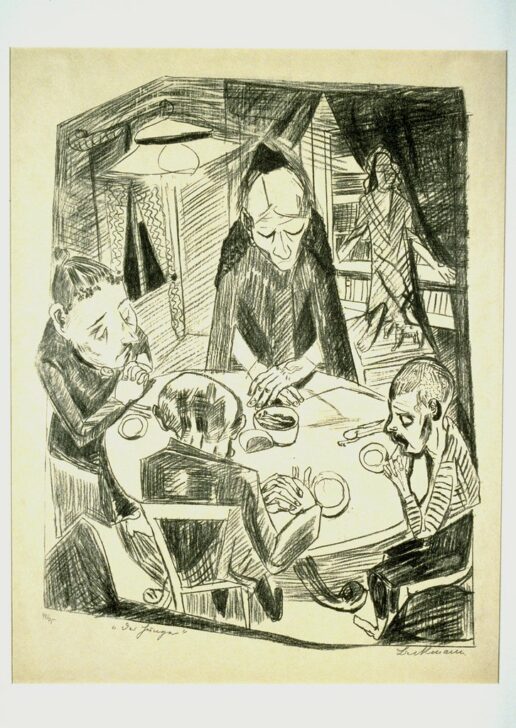Hunger. No. 4 from the Series of Ten Prints, ‘Die Hölle’ (Hell).
Max Beckmann

Description
The cramped interior space of Hunger highlights the distortions of form that typify Max Beckmann’s style during World War I. The print series from which this lithograph comes, Hell, marks the artist’s deepest engagement with the socially critical art created by the revolutionary artists in the years following the war. The series scathingly elucidates the destitution of post-war life, the uncaring, callous attitude of the well-off, and the thuggery of the right-wing reaction to the revolution. This lithograph illustrates the food shortage that became acute in Germany in the middle of the war and worsened amid the extreme post-war economic crisis.
Hands folded in prayer before eating their meager meal, the figures express the quiet suffering that took place in many homes at war’s end. The artist sits with his back to the viewer with his son, mother-in-law, and a family friend. In the background stands a sculpture of John the Baptist, identified by the lamb at his feet, which accentuates the piousness of the scene, transforming it into a picture of universal human suffering, and reminding the viewer of the virtues of compassion and charity.
Text written by David Choberka, Research Assistant for the UMMA exhibition Graphic Visions: German Expressionist Prints and Drawings, January 25–April 6, 2003, West Gallery
Usage Rights:
If you are interested in using an image for a publication, please visit https://umma.umich.edu/request-image/ for more information and to fill out the online Image Rights and Reproductions Request Form.